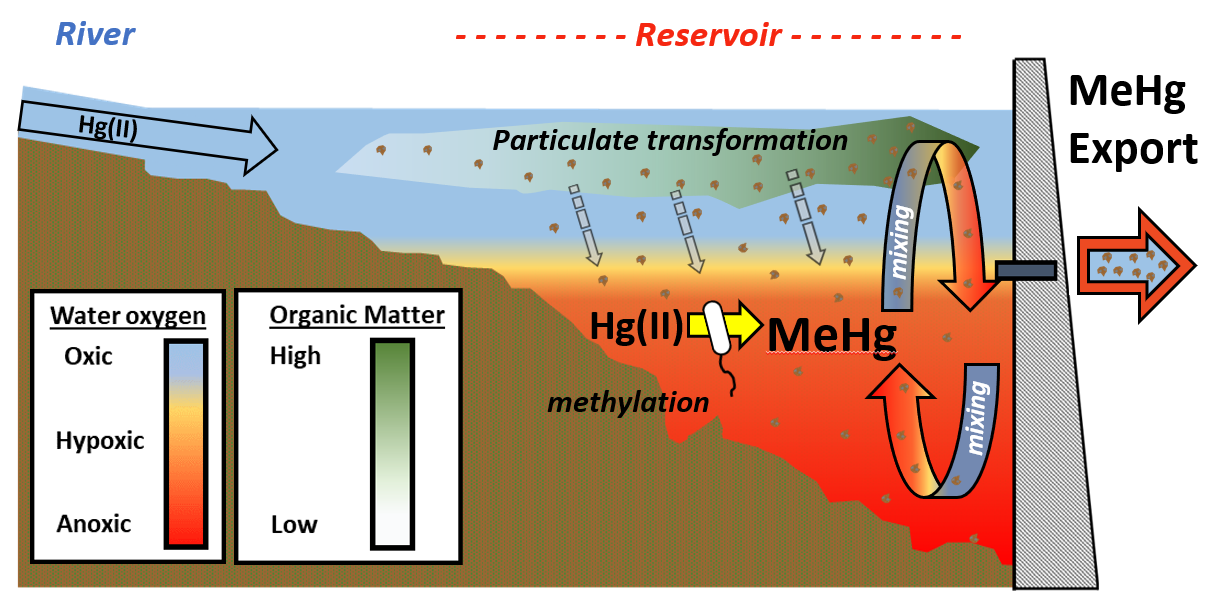New ESPI paper on the coupled biogeochemical and hydrologic processes controlling methylmercury in a river-reservoir system
Reservoir impoundments of rivers have profound impacts on ecological and biogeochemical processes of contaminants, particularly in arid landscapes. The risk posed by mercury, a metal that bioaccumulates to toxic levels in the form of methylmercury, is exacerbated in some reservoirs as a result of toxic methylmercury formation under low oxygen conditions. This study demonstrates that methylmercury accumulates at depth in a reservoir during stratification simultaneous with increases in the organic matter content of particles in water. Seasonal destratification, driven by river-reservoir hydrology, mobilizes methylmercury in water (filtered and associated with particles) downstream. These processes affect methylmercury uptake in aquatic food webs, and their understanding informs management of arid land reservoirs towards the goals of decreasing methylmercury exposure within and downstream of reservoirs. This work was published in the journal Environmental Science: Processes and Impacts. DOI: https://doi.org/10.1039/D3EM00032J.
